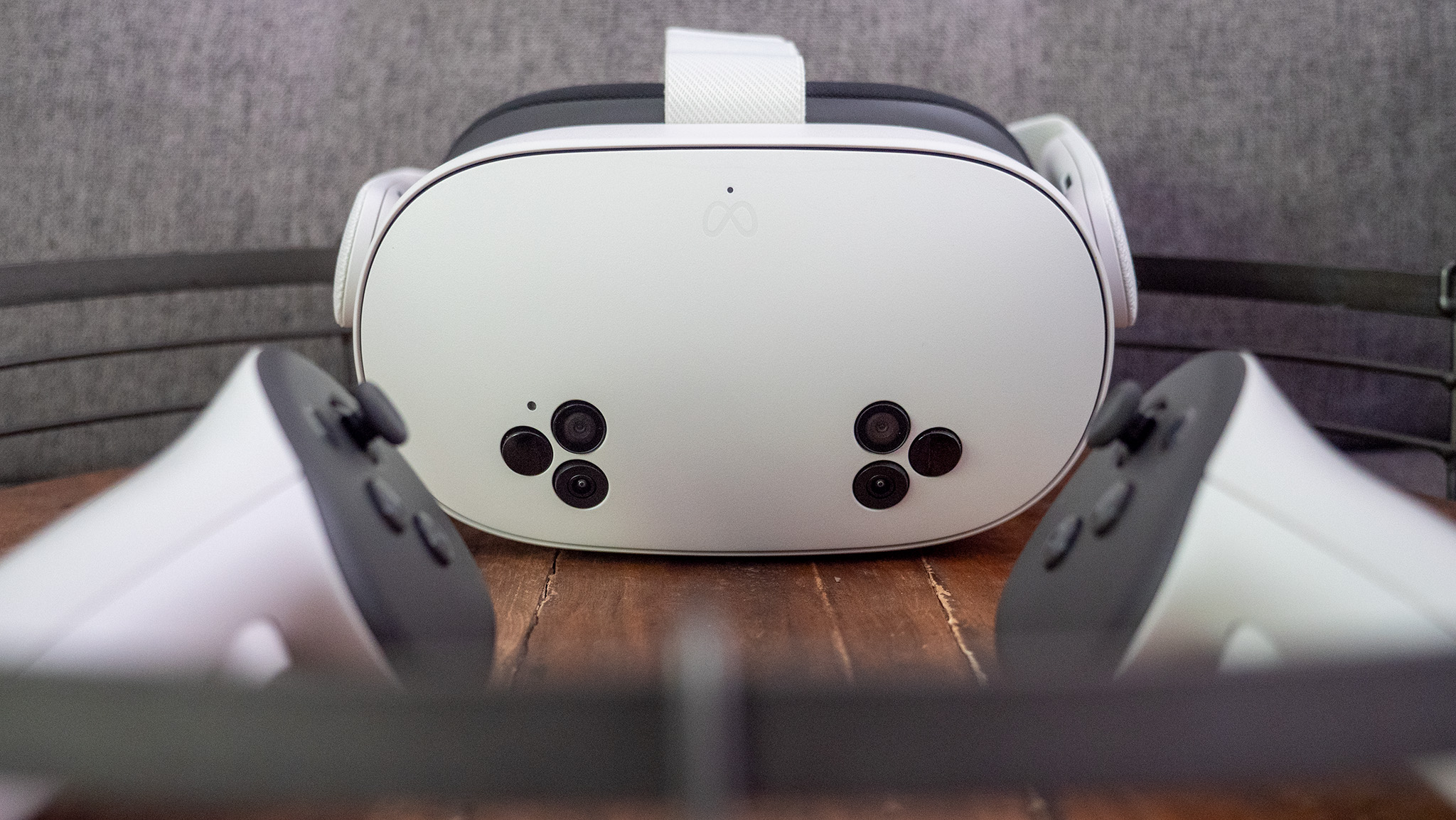
When the Meta Quest 3S was first leaked, the idea of having a $299 Quest 3 headset seemed preposterous. How in the world could Meta possibly deliver a headset that's $200 cheaper without sacrificing the Quest 3's power, color mixed reality vision, new controllers with advanced haptic feedback, and all the improvements to the Quest ecosystem that have happened over the next year?
Somehow, they've done it. The Meta Quest 3S is a triumph in nearly every way, from its highly polished onboarding presentation to the excellent mixed reality content that's been developed over the past year. It feels like a palpable upgrade from the Quest 2 and even sports some design and UX improvements over the more expensive Quest 3.
Obviously, there have to be some concessions to get to a $299 price point but there are surprisingly few. The biggest is the display stack, as it uses the same lenses and display from the Quest 2 but still features plenty of visual upgrades and tweaks. That includes a next-generation processor, improved rendering and processing, and much more. If you're looking for a next-gen VR headset upgrade from a Quest 2 at an affordable price, you've found it.
Black Friday 2024 is coming up which typically means big sales. However, we don't expect the Meta Quest 3S to go on sale since it just came out, plus it still comes with a free copy of Batman Arkham Shadow for just $299. That doesn't mean Meta won't be doing nothing, though, as the company usually discounts games heavily during this period, so you can expect to get some of the best Meta Quest games for cheap during Black Friday 2024.
Meta Quest 3S: Price and availability
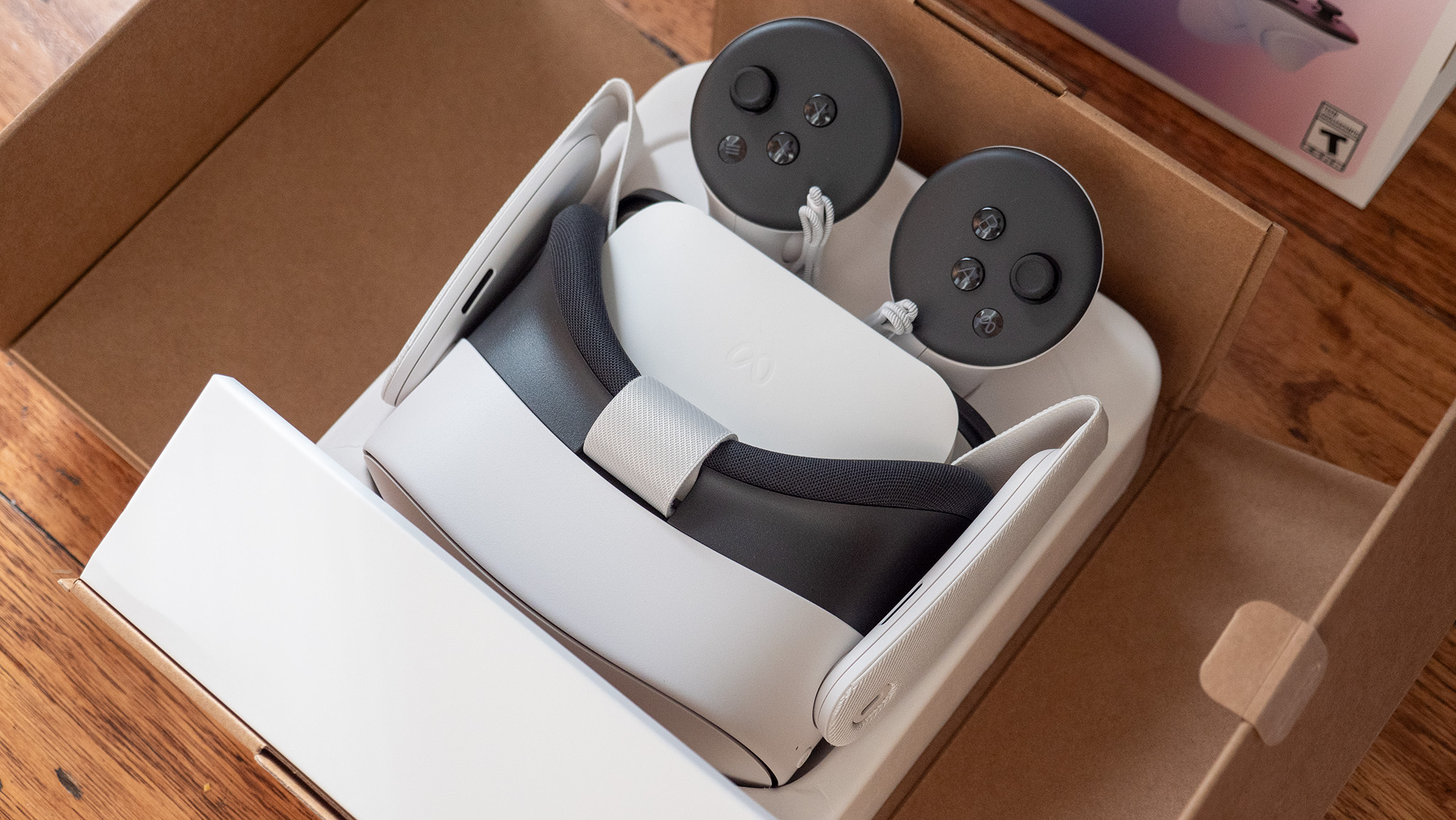
The Meta Quest 3S retails for $299 and includes 128GB of storage, while the Meta Quest 3S with 256GB of storage retails for $399. Both models come in a white colorway and come with a pair of Quest 3 touch controllers, a preinstalled cloth head strap, and a preinstalled cloth facial interface.
Every Meta Quest 3S comes with a free copy of Batman Arkham Shadow and 3 months of the Meta Quest Plus subscription service until April 2025.
Some Meta Quest 2 accessories work on a Quest 3S, so you can keep some of those around instead of having to buy new ones. Likewise, most of the best Quest 3 accessories work on a Quest 3S, with the exception of the facial interface, which has a new design.
Meta Quest 3S: Design, comfort, and battery life
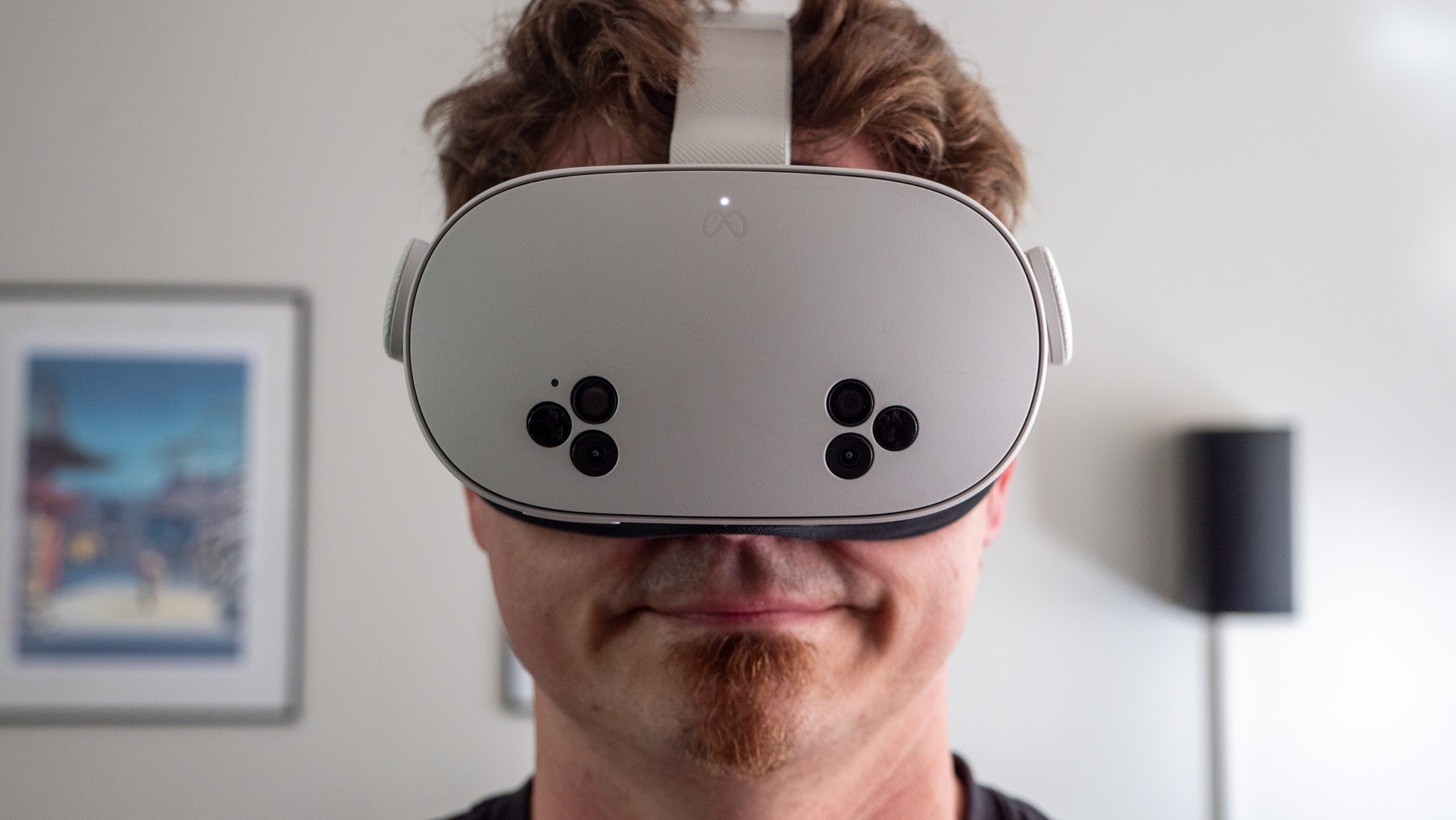
Meta has learned a thing or two about headset comfort over the past few years, but that doesn't mean the Quest 3S is perfect. It's only a gram lighter than the Quest 3, which was a few grams heavier than the Quest 2. All of this, despite still shipping with a cloth strap that I find generally uncomfortable, although it's fine for short play sessions.
The biggest problem with the cloth strap is that it rests on the top of my ears and irritates my skin rather quickly. Meta is using the same Y-shaped top strap design it launched with the Quest 3, which means it better allocates weight across the head but still doesn't work anywhere near as well as the BoboVR M3 Pro head strap does, for instance.
I didn't find the Quest 3S to be any less comfortable than the Meta Quest 3 despite the headset's additional depth. That longer depth means the center of gravity is farther away from your face, adding extra weight to your cheeks. If you're upgrading from a Quest 2, the Quest 3S should feel a bit more comfortable since it's slimmer.
Meta offset this with a new facial interface design that feels great, though, likely significantly aiding my comfort while wearing it. Historically, I couldn't wait to swap out the facial interface with a third-party one, but I've been pleasantly surprised by how comfortable this one is.
The headset is also 20mm slimmer than the Quest 2, so it has a weight distribution closer to your face. Quest 3 is an additional 10mm slimmer than Quest 3S.
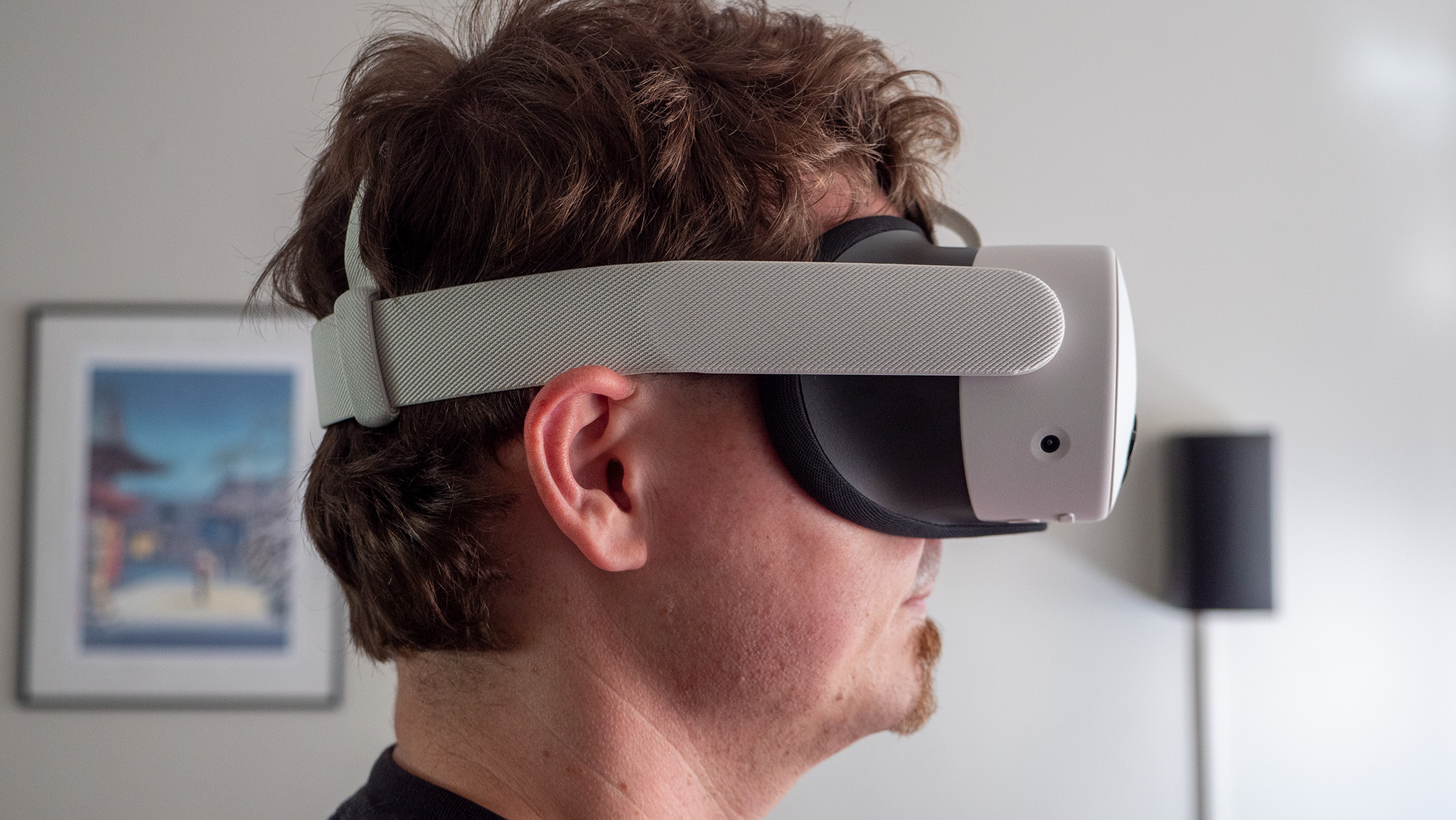
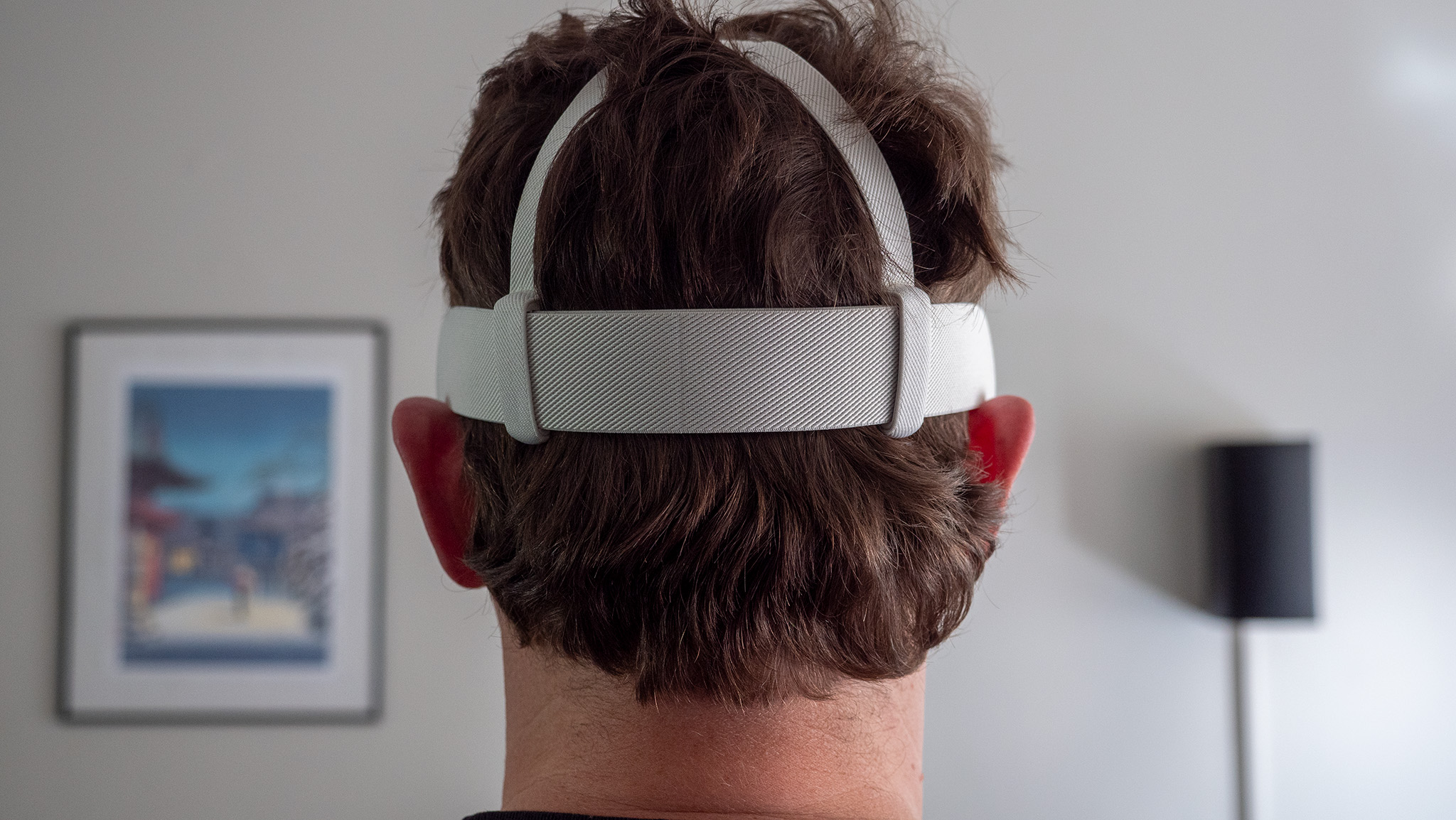
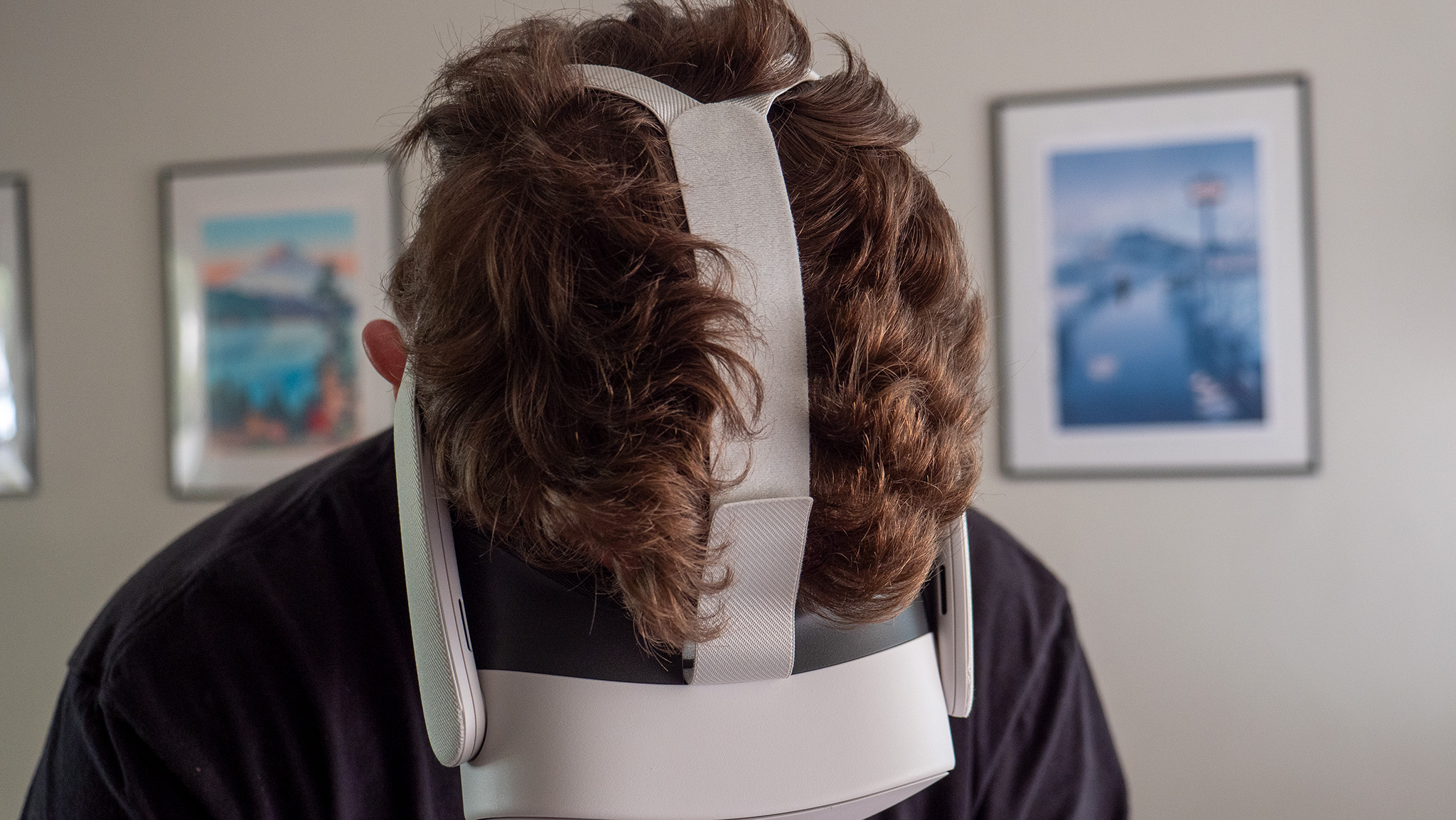
However there are still three main reasons to choose a good third-party facial interface replacement once reputable companies release them. First is hygiene. The cloth is nice and soft but also absorbs sweat. Grab a $12 pair of silicone covers for now, especially if you sweat a lot or share the headset with other people.
The second reason to replace the stock facial interface is because of lens fog. I haven't had issues with it during the review period because it's been cool and dry here, but as soon as the humidity ramps up again in half a year I'll need something more breathable. For now, Meta makes an excellent breathable facial interface with semi-transparent sides. I used this one at the Quest 3S hands-on event and loved it, although it's not for everyone since it purposefully lets a lot of light in.
Third, if you use glasses, some third-party facial interfaces have built-in glasses spacing adjustments. The default Meta Quest 3 facial interface includes a way to adjust for glasses, but the one on the Quest 3S doesn't. You'll need to use the glasses spacer in the box to do this which doesn't offer as many spacing options as the Quest 3 method.
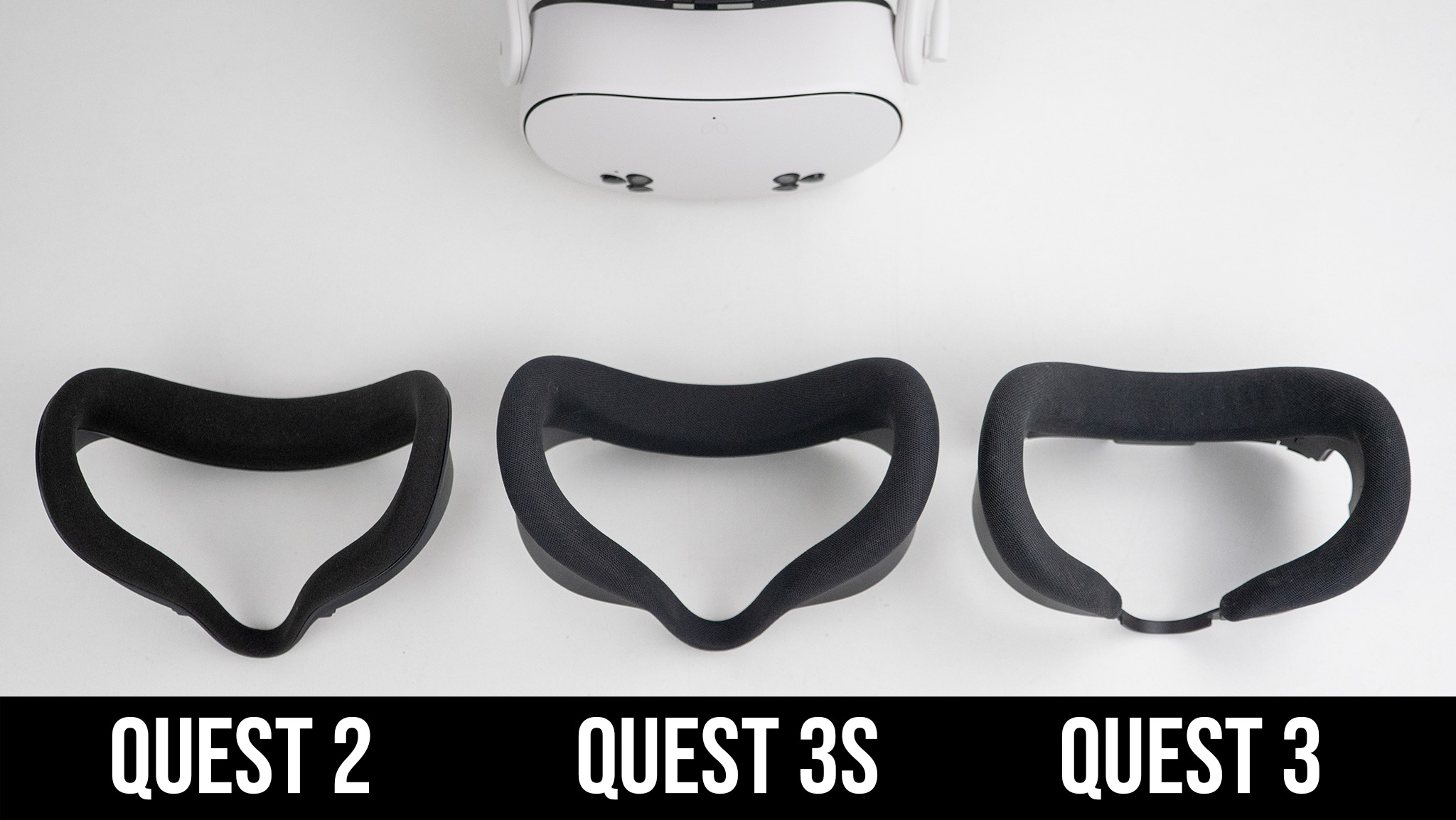
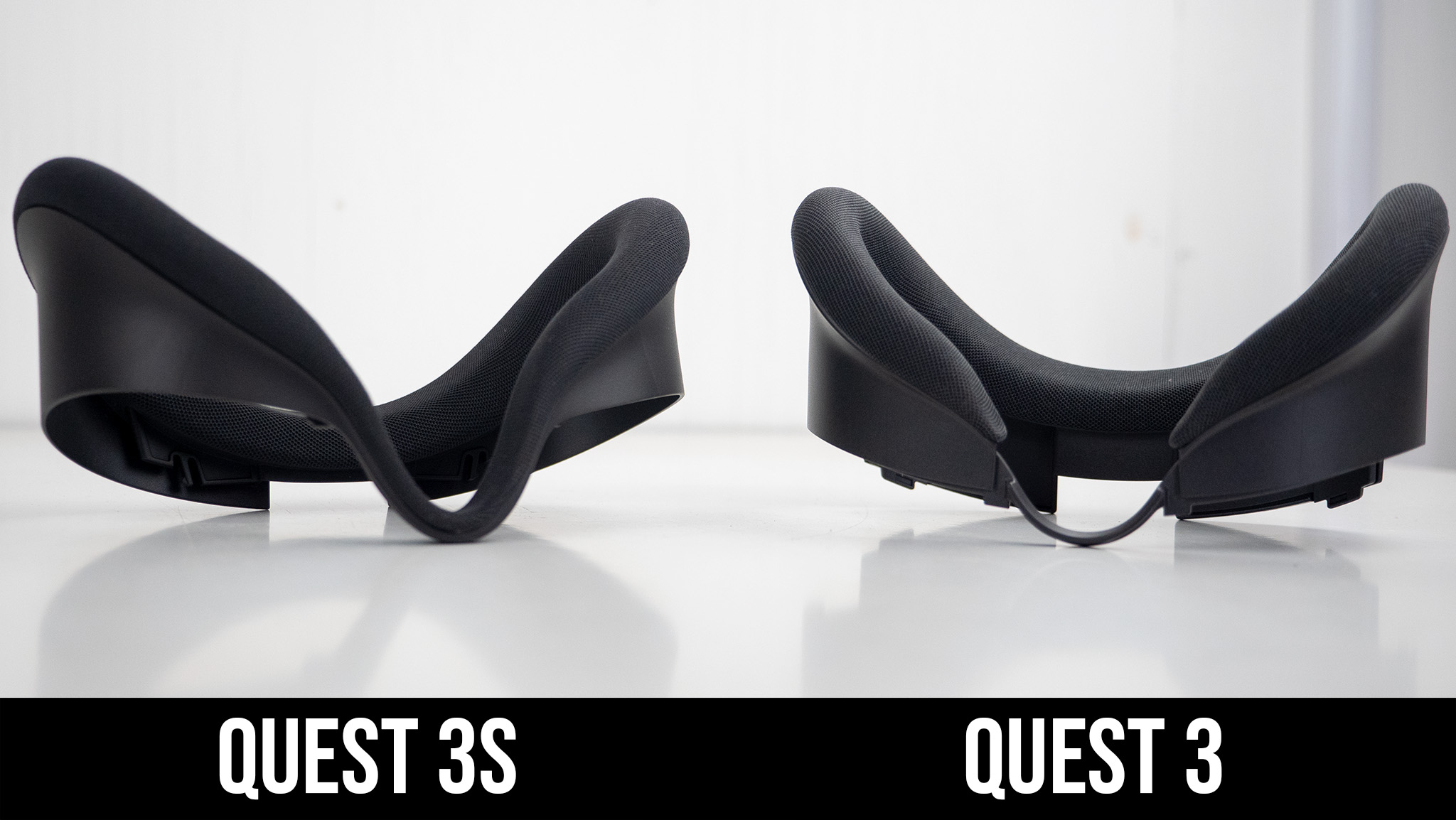
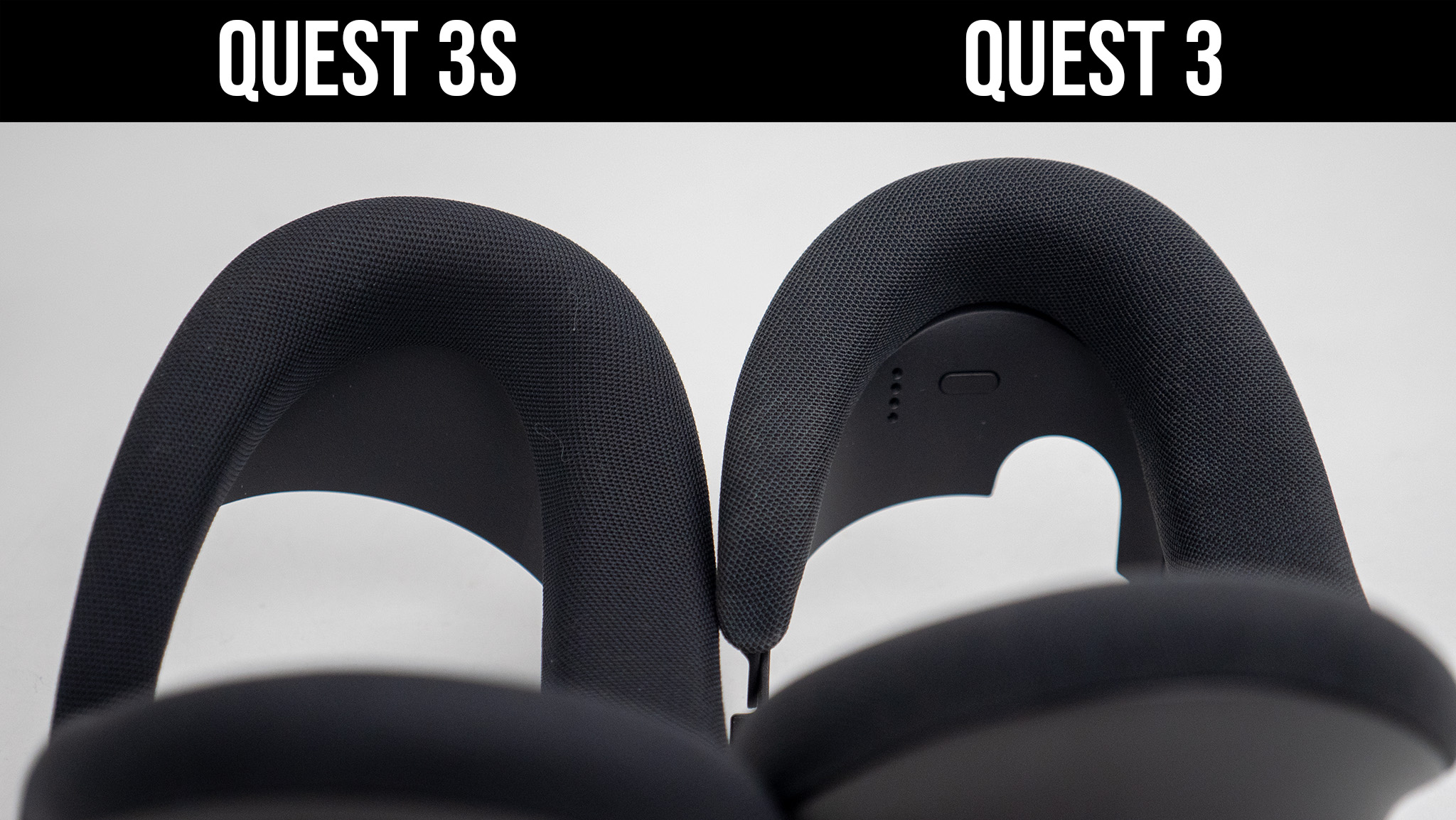
That said, the new interface design makes it far easier to swap out the facial interface than any other Quest headset to date. This has been improved with every generation, so it's good to see it continue to happen.
But even if you don't swap out any of these modular parts right away, I think short play sessions will be comfortable enough. Thankfully, all the best Meta Quest 3 accessories work on the Quest 3S, except for the replacement of the facial interface. You'll need one specifically made for the Quest 3S.
Keep in mind that the Quest 3S does not have a 3.5mm audio jack, so if you want to use headphones instead of the excellent built-in speakers on the Quest 3S arms, I recommend picking up a pair of PrismXR Vega T1 earbuds. Regular Bluetooth earbuds or headphones won't work in VR because Bluetooth's latency is too high. This can actually make you feel sick because of an odd disconnect between what your brain hears and what it sees.
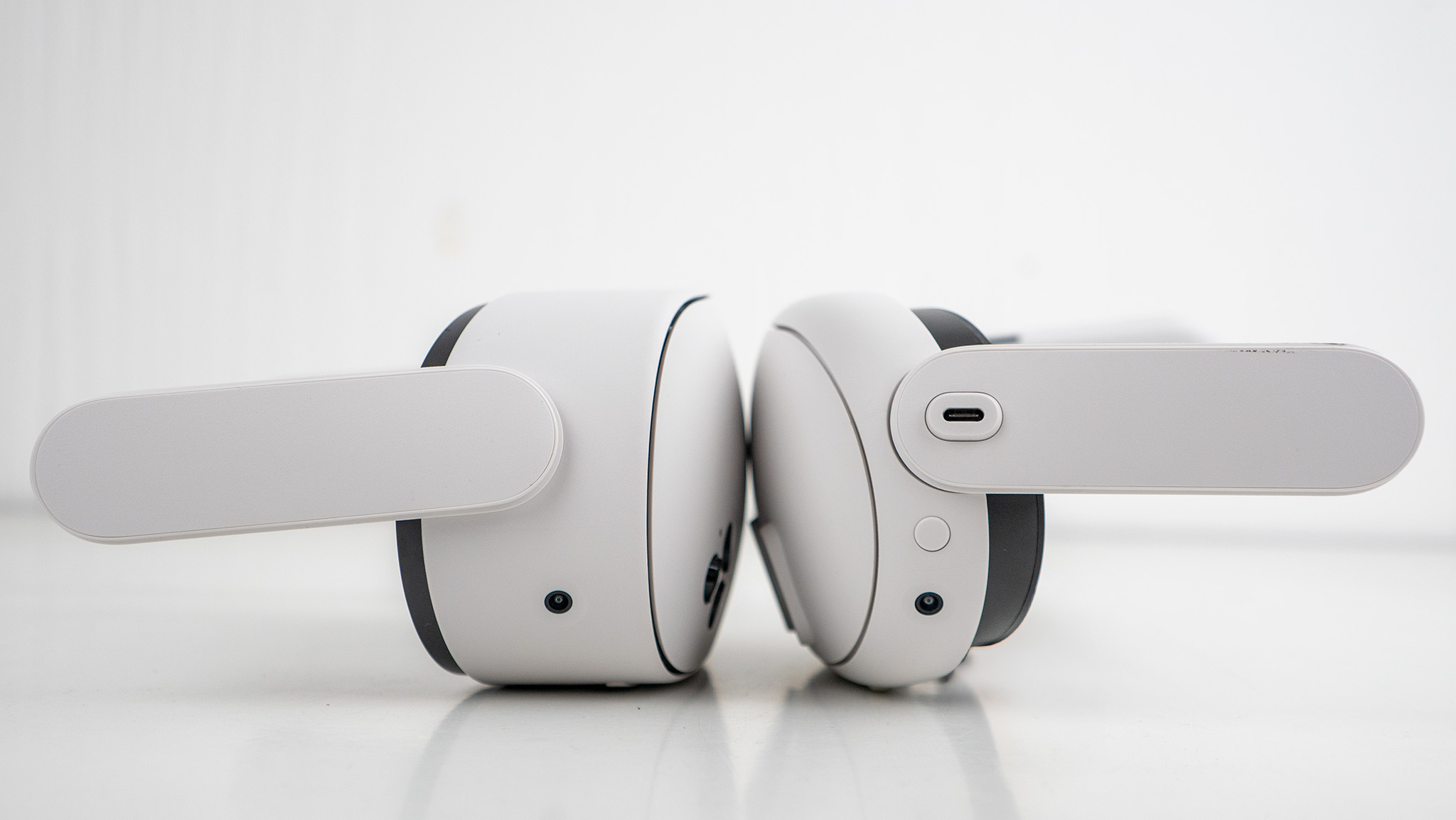
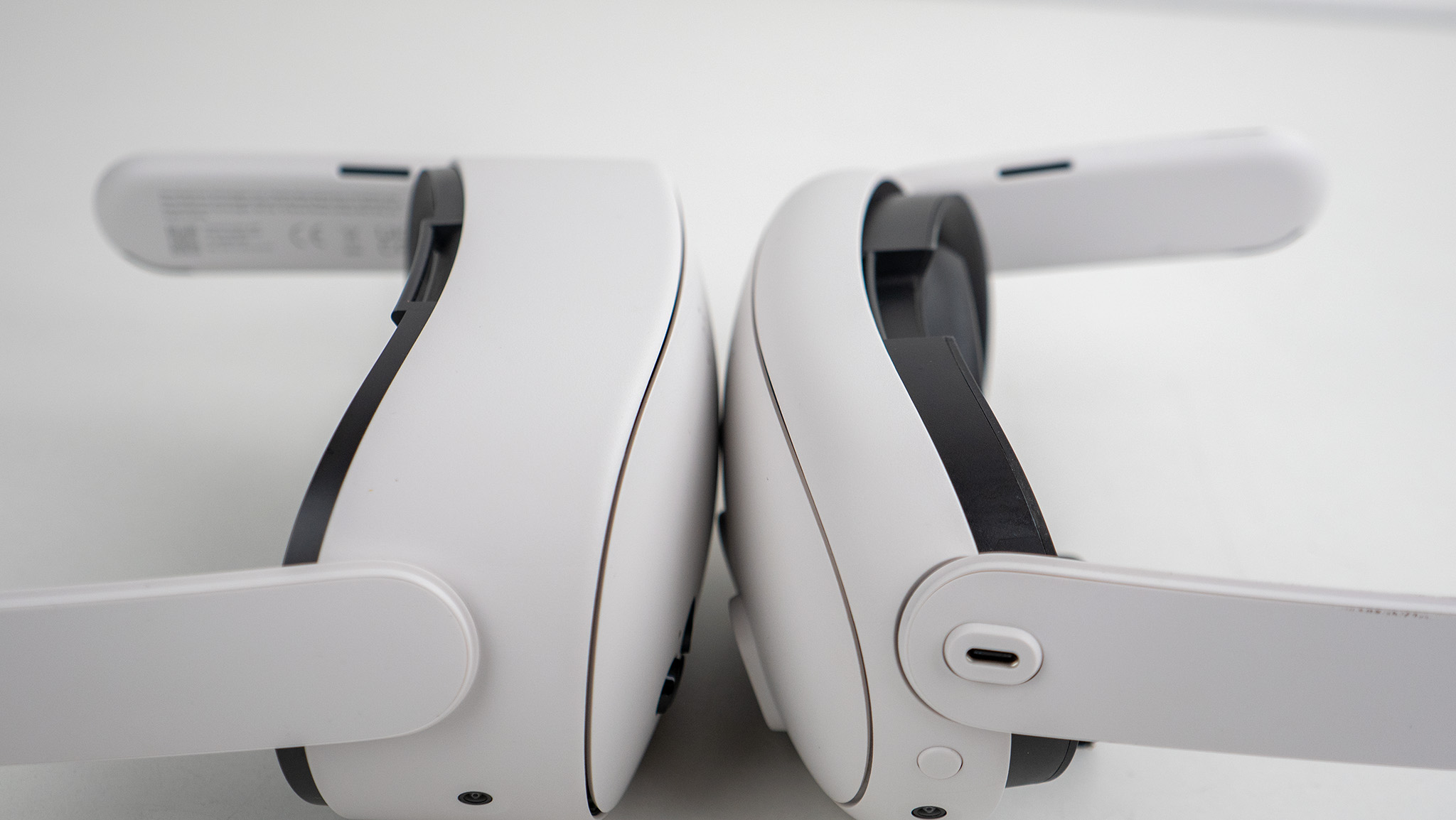
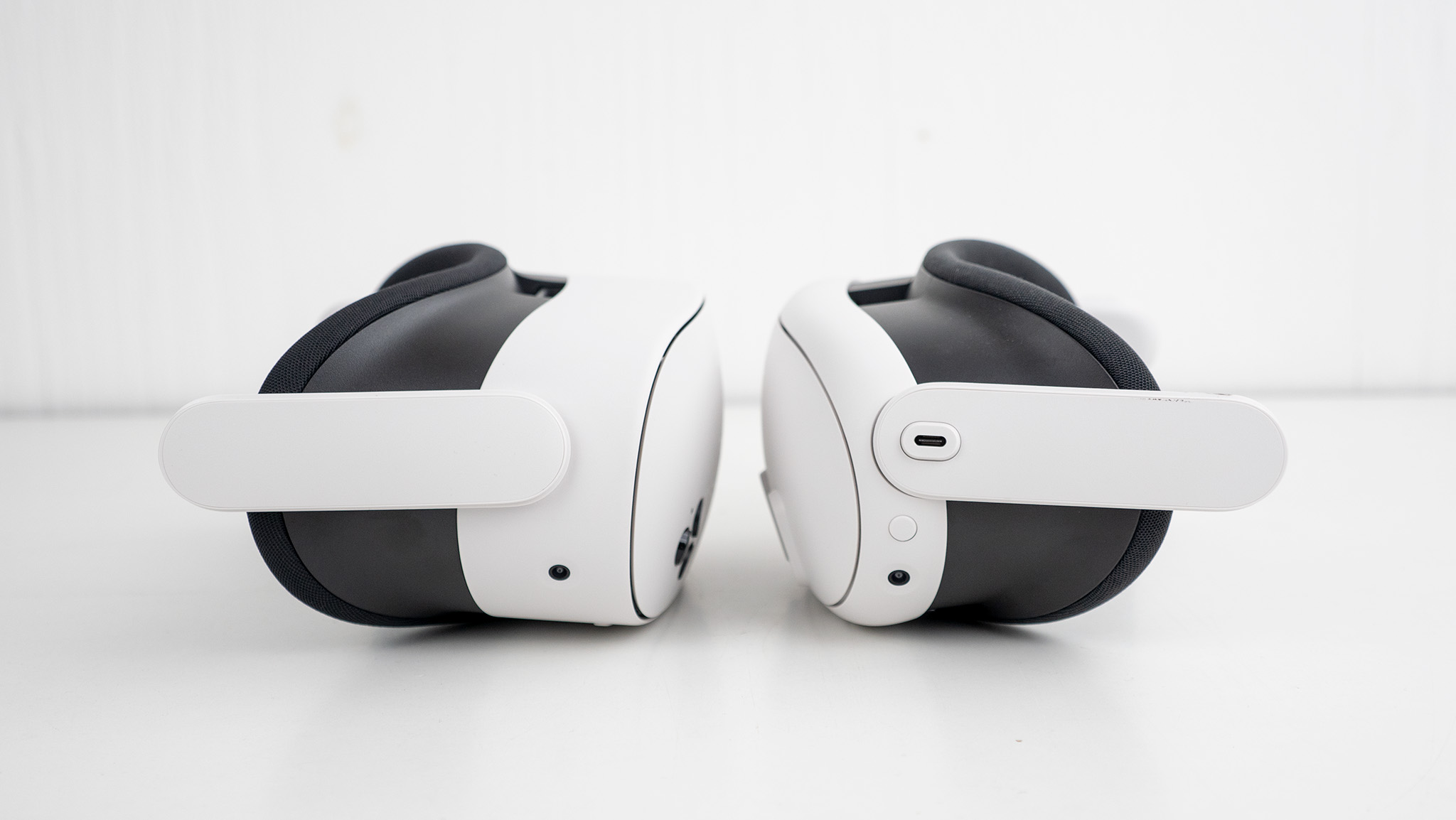
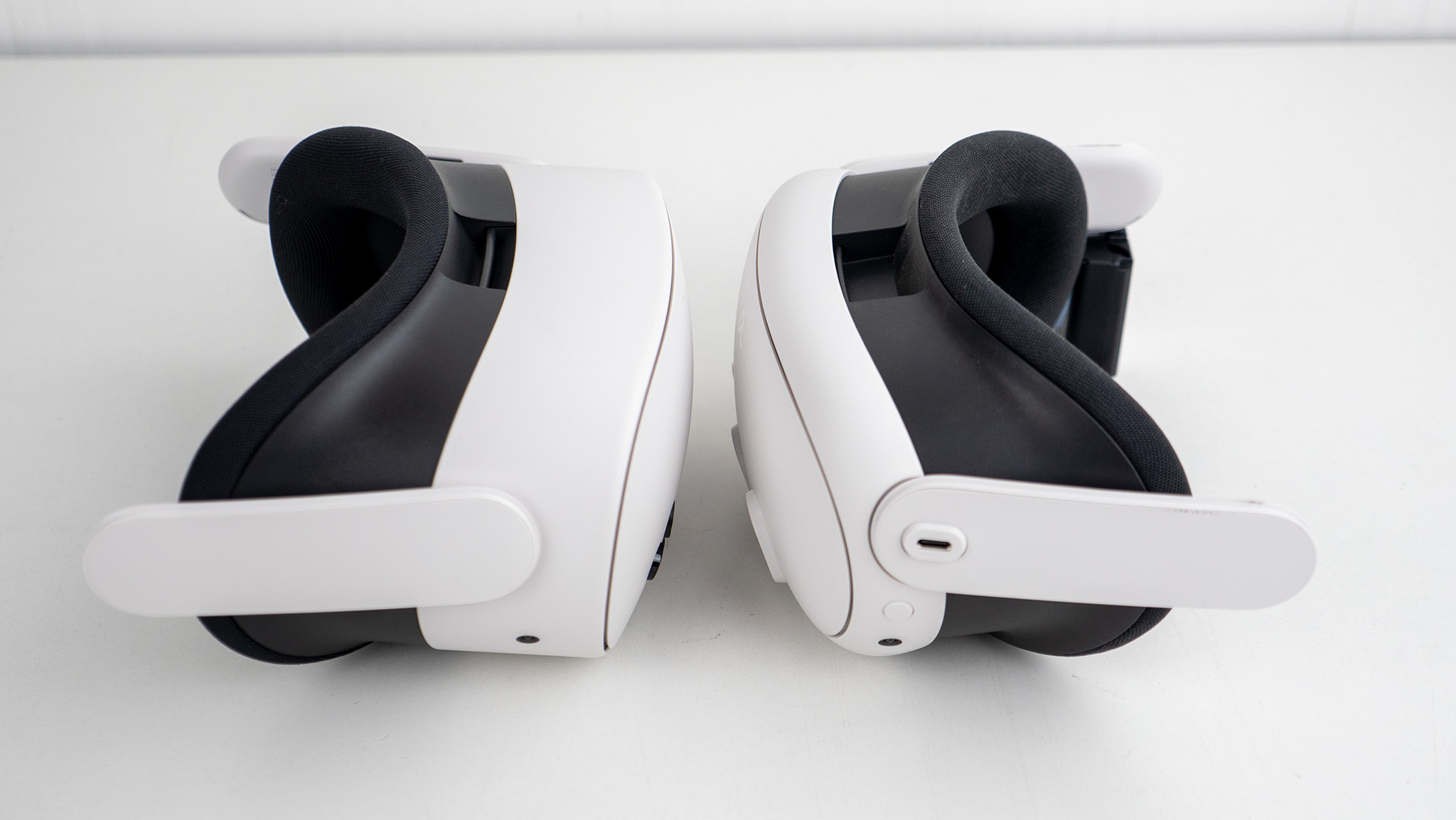
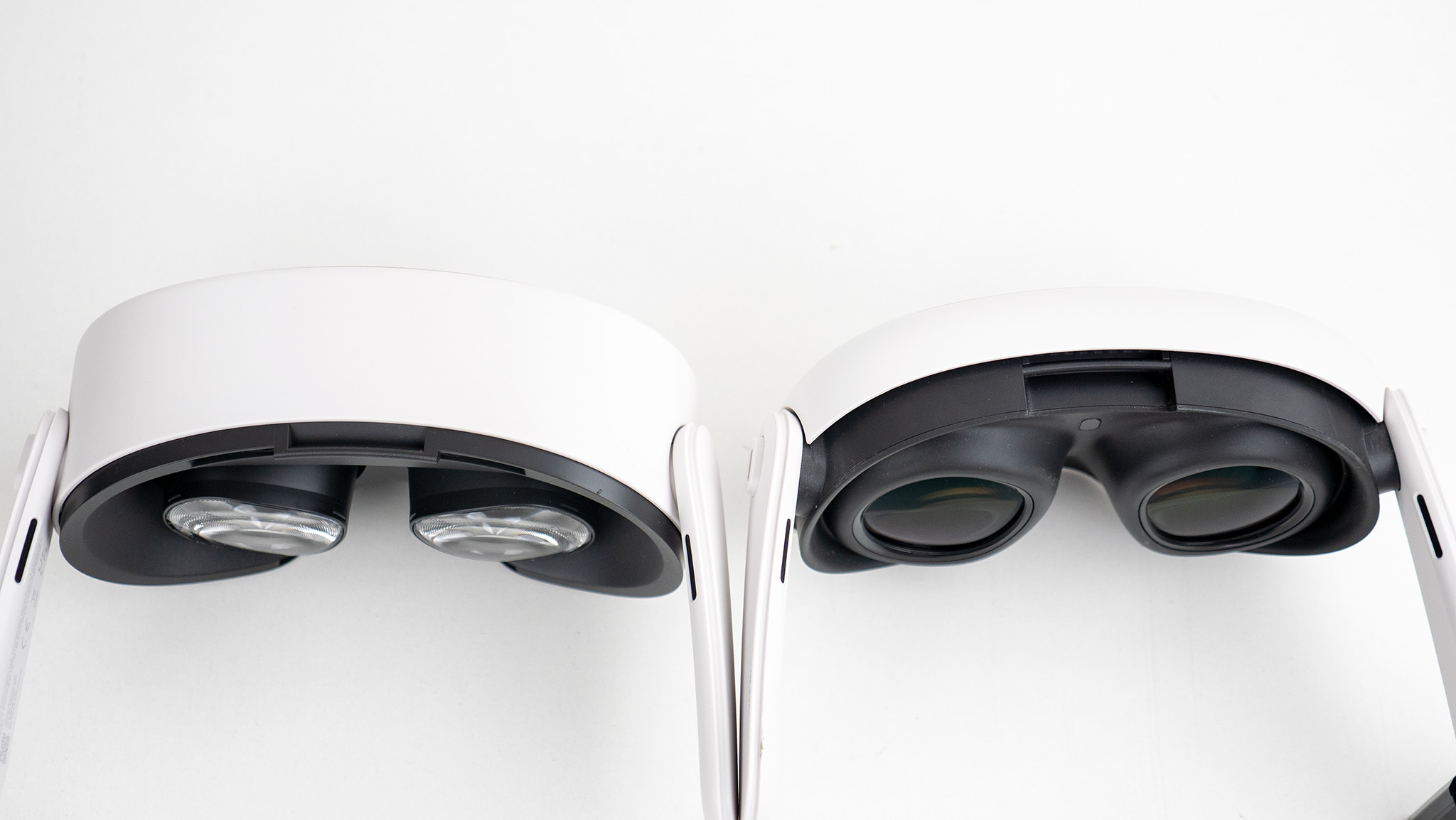
In my testing, I've found that the Quest 3S has the best battery life of any modern Quest headset. On average, I got around two and a half hours of use from a single charge, with more power-hungry games like Batman Arkham Shadow bringing that down to around 2 hours.
I'd say if you were planning to just use the Quest 3S with the default head strap and facial interface, this is more than enough time before any kind of fatigue sets in. Grabbing a new head strap with built-in battery like the BoboVR M3 Pro or Kiwi Design H4 will add several hours of battery life and significantly better comfort overall, making it a worthwhile $50 upgrade.
Meta Quest 3S: Display and lenses
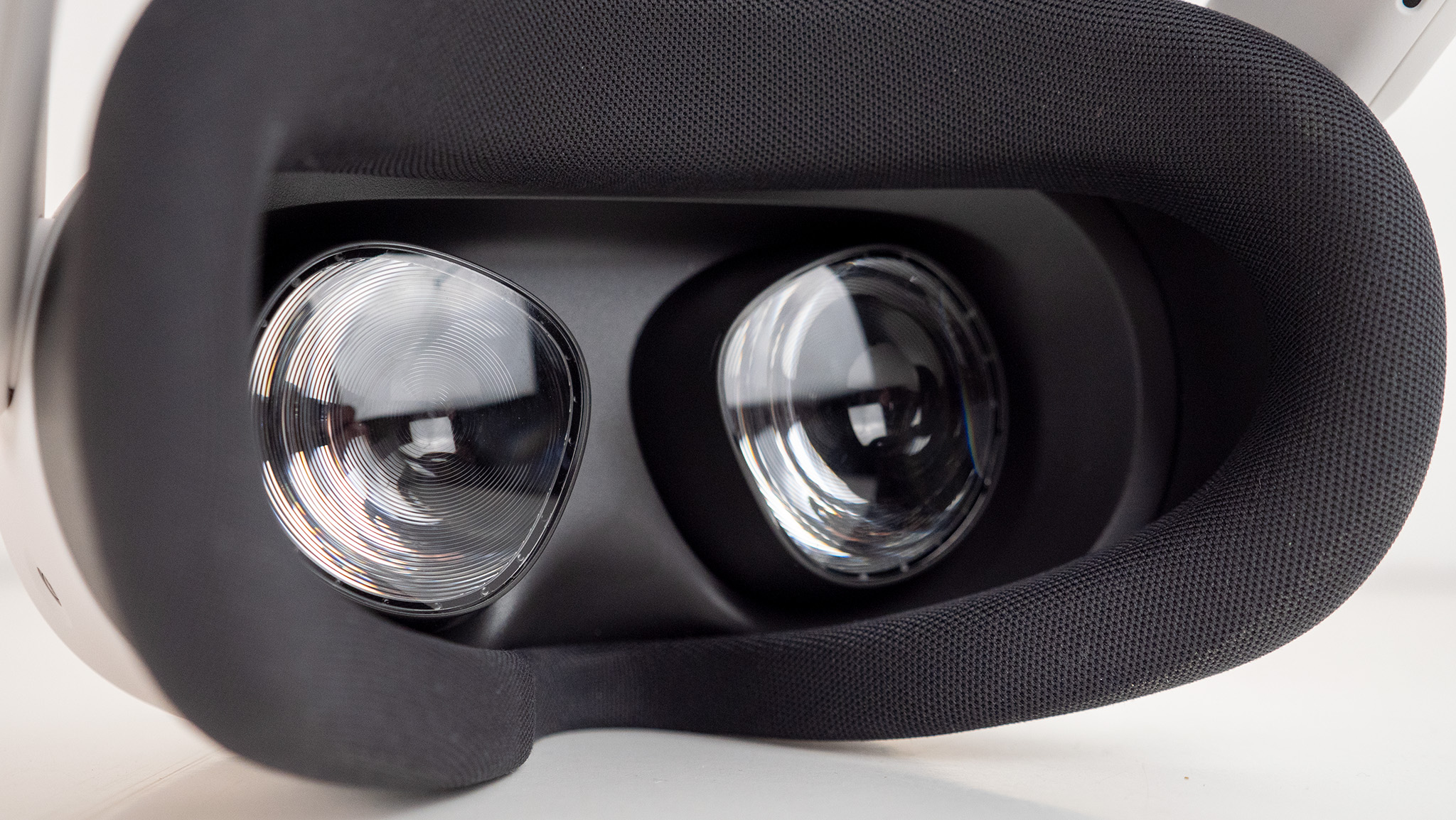
If you directly compare the Meta Quest 3 and Meta Quest 3S, this section holds the only real differences you'll notice. The Meta Quest 3S uses the same display and Fresnel lenses as the Meta Quest 2, so if you've only ever used a Quest 1 or Quest 2, you probably won't be particularly disappointed in the Quest 3S's display or lenses.
All in all, they're fine and suit a $299 headset rather well. As with all Fresnel lenses, there's a small "sweet spot" right in the middle of each lens where you'll get the clearest view. Anything outside of this circle gets blurrier the closer you look to the edges.
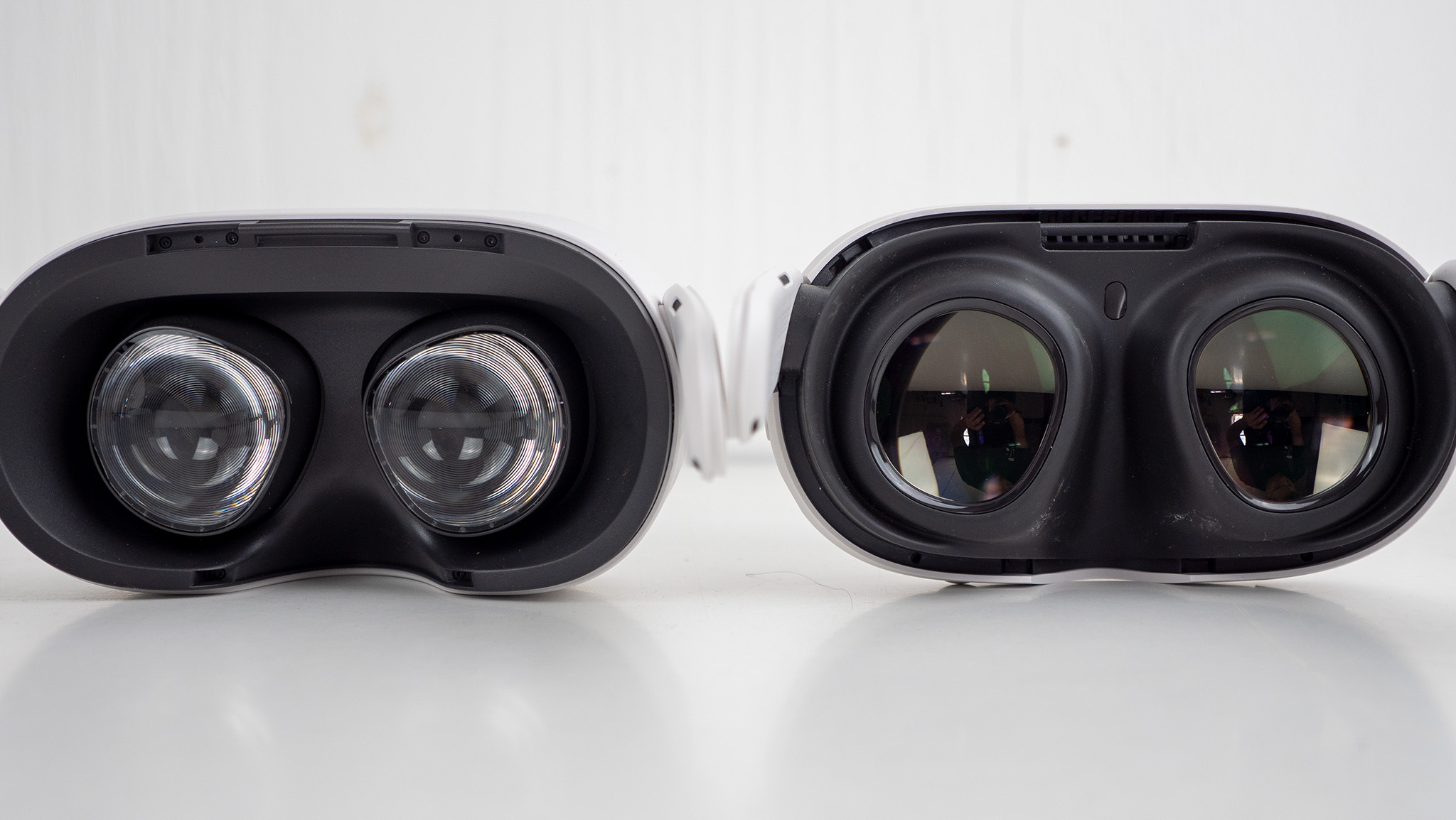
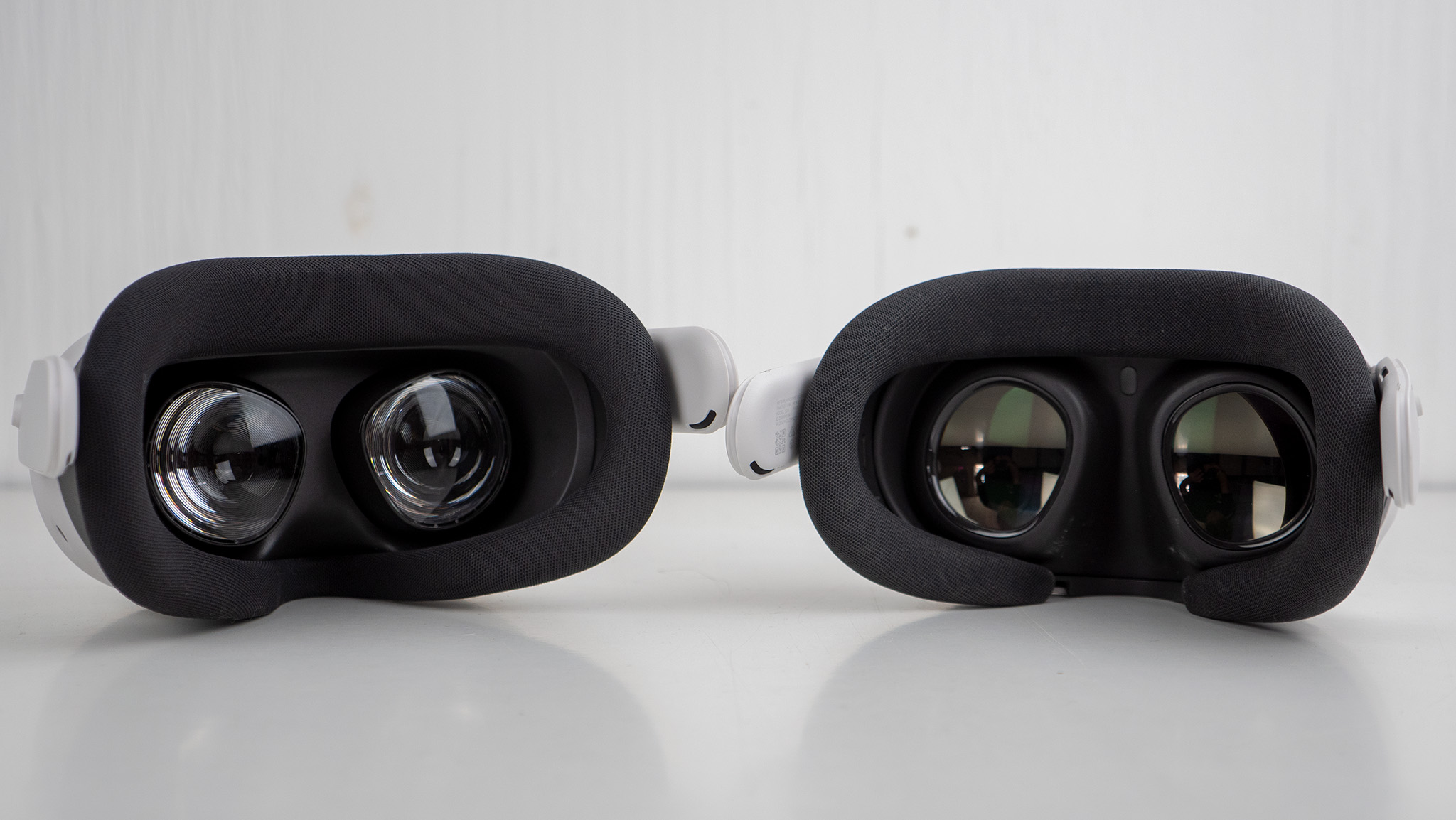
The Meta Quest 3S uses the same lenses and display as the Quest 2, foregoing most next-generation upgrades from the more expensive Quest 3.
The 90-degree FoV on the Quest 3S's lenses feels a bit constricting compared to the substantially wider 110-degree FoV of the Quest 3. This difference cannot be understated, and it all melds together to show just how superior the lenses on the Quest 3 are.
The Meta Quest 3S's lenses also adjust the same way as the Quest 2, so if you're coming from a Quest 2 you'll know exactly what to do. The only difference is that there's no 1/2/3 preset number in the middle of the lenses that changes as you adjust the spacing. Meta says it cut this mechanism to keep the manufacturing cost of the headset as low as possible, allowing it to hit that $299 price point.
That being said, if you have an interpupillary distance (IPD) over 72mm you're probably going to find the Meta Quest 3S uncomfortable. If you find yourself in this boat, a 3D printed IPD expander like this one will push the lenses out a bit and help.
If you plan to work in VR or use it for a lot of text-based applications, it makes more sense to spend the extra money on a Quest 3.
Like the lenses, the display on the Meta Quest 3S is the same as the one on the Quest 2. It gets plenty bright, but the contrast is fairly low, the colors are a bit on the dull side, and the resolution is noticeably lower than the Quest 3's panels.
As far as clarity is concerned, I'd say the resolution difference between Quest 3 and Quest 3S is similar to playing games at 1440p vs 1080p. The Quest 3S isn't as sharp, and fine detail gets a bit lost, but it's not offensively lower resolution.
If there's any one area where the resolution and lenses make a big difference, it's for folks who want to work in VR. If that's going to be a big part of your headset usage, stick with the Quest 3.
Meta Quest 3S: Controllers and hand tracking
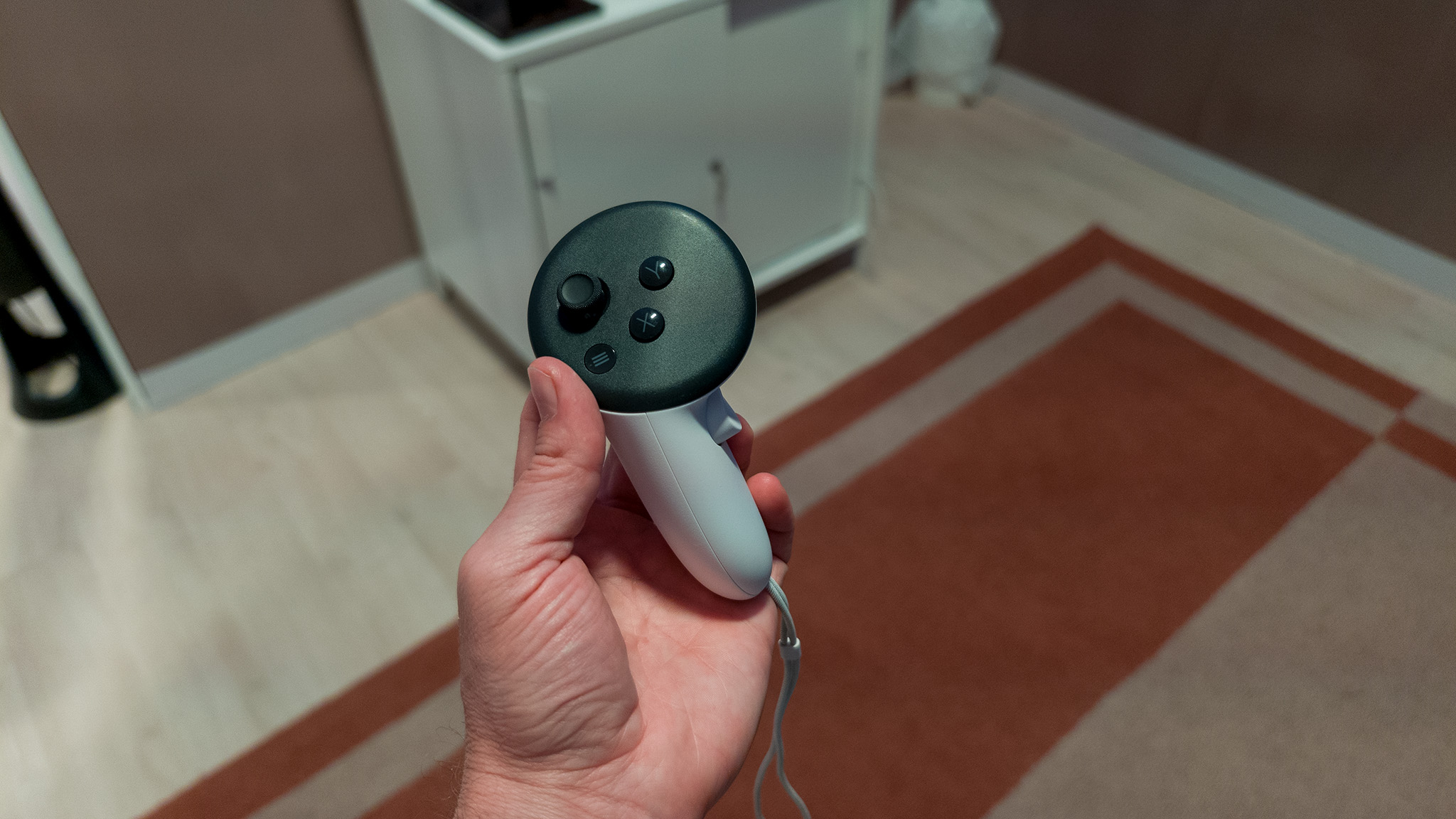
The Meta Quest 3S and Quest 3 use identical controllers. These new controllers ditch the LED ring and tighten up some ergonomics for a much smaller profile than the Quest 2's controllers. Tracking is still done with LEDs, though, which are situated around the controller face and handles.
Tracking is enhanced through better camera positioning around the headset—particularly the lower side-mounted cameras, which can see better along the sides and below the headset than on the Quest 2—and Meta's Horizon OS, which fills in any visual tracking gaps with gyro sensor data from inside the controller and an AI algorithm that predicts hand position based on arm and shoulder movements.
The Meta Quest 3S uses the same advanced controllers as the Quest 3 and are powered by a single AA battery.
Each controller is powered by a single AA battery. Based on my extended usage of the Quest 3 over the past year, you'll only need to swap them out once every two months or so, depending on how often you play. I recommend picking up these cheap Amazon Basics rechargeable AA batteries for a few bucks so you can keep reusing them.
Each controller has a battery door that can be swapped out for any number of excellent controller accessories, like these AMVR controller grips, which add grip and help balance the controllers better with a handy hand strap. I find these controllers to be a tad too small for comfort, so getting a pair of grips helps offset the weight and add substantial comfort for just a few bucks.
Quest 3S also supports what's called Inside-Out Body Tracking, which only a handful of games currently support. However, developers may start to use it more now that another Quest headset supports the feature. With this, in-game character movements will feel more realistic as the headset can properly align the virtual character's torso, shoulders, and arms with your actual movements in real life.

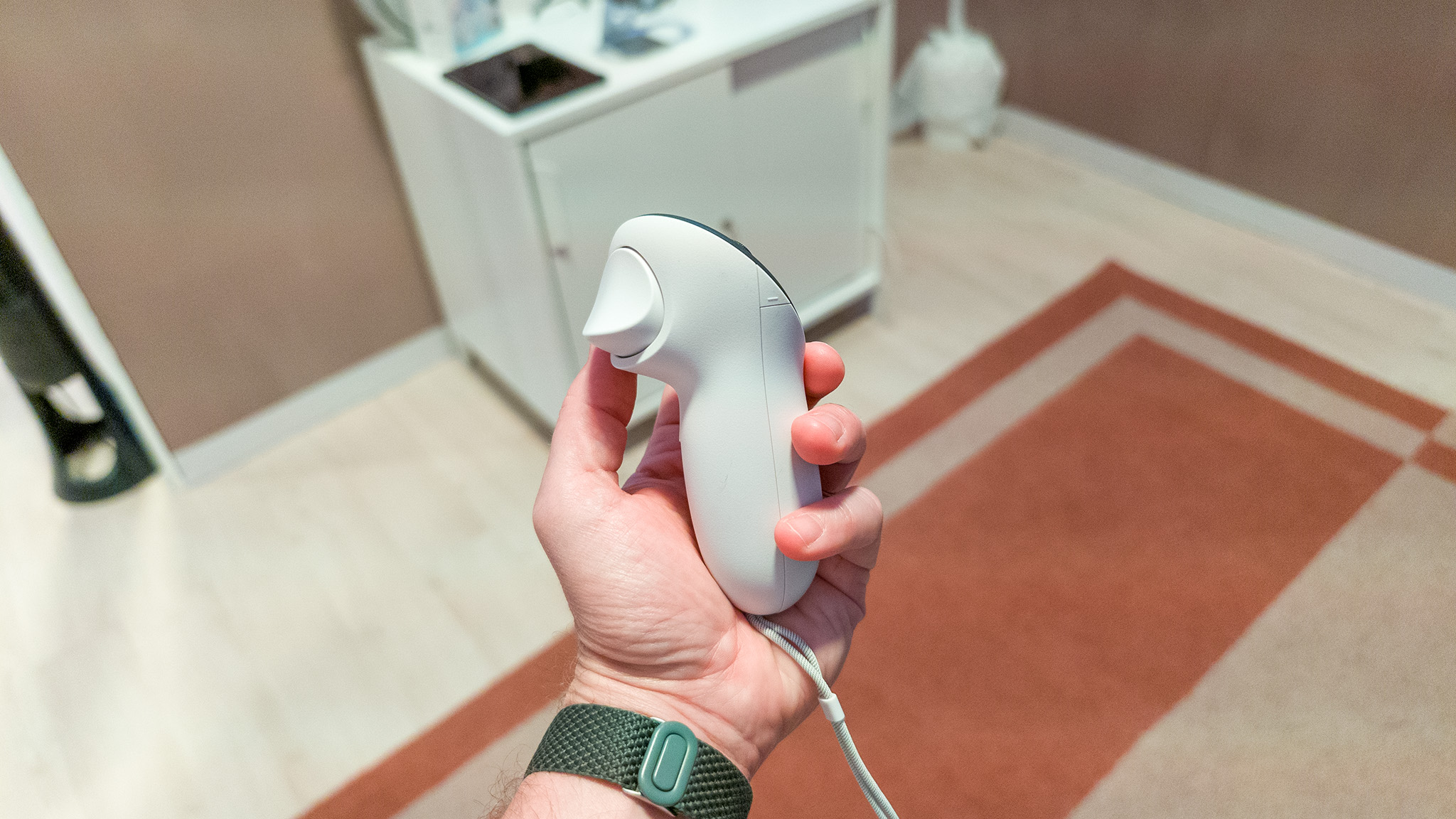
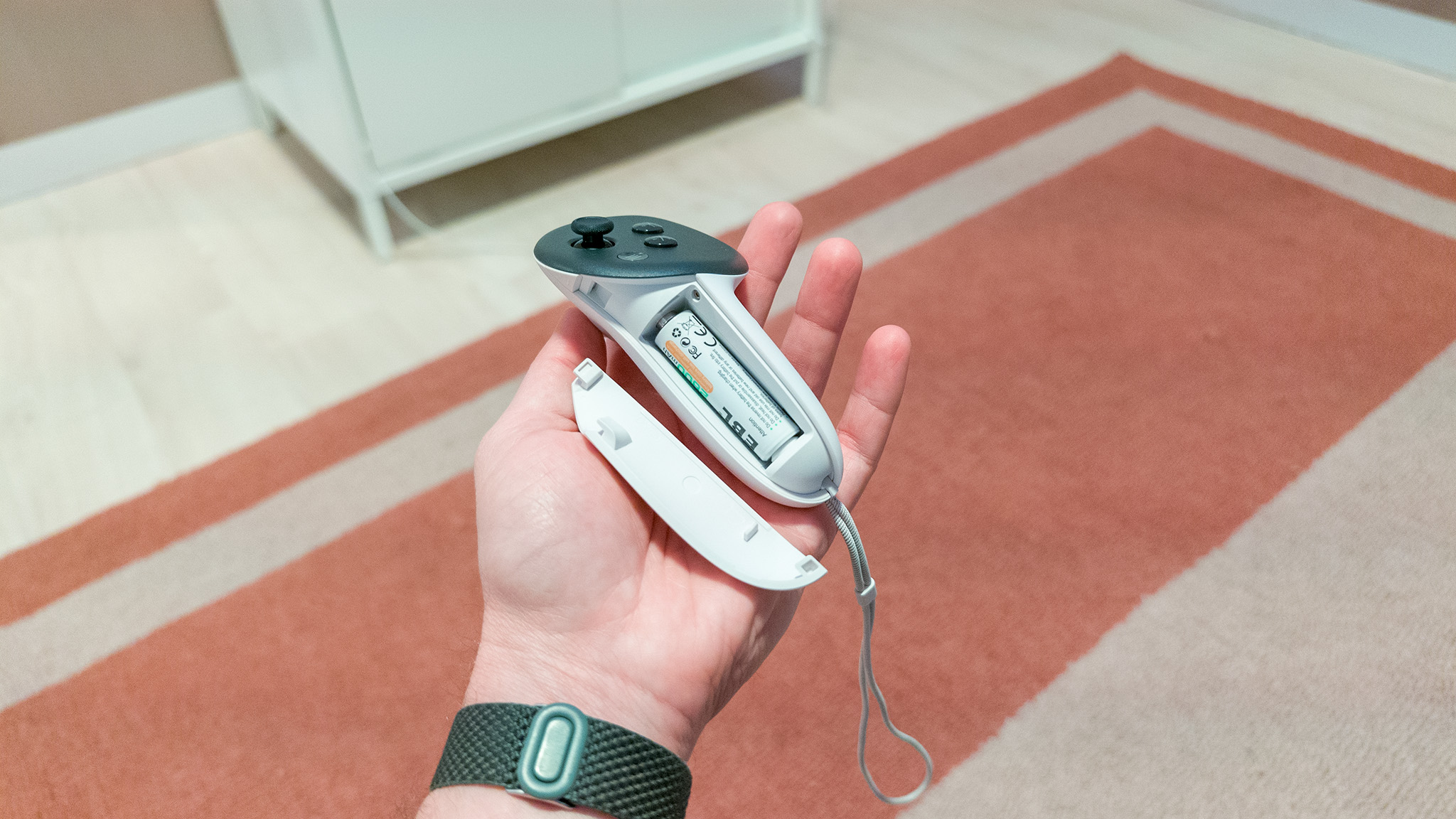
Meta Quest 3S has also been outfitted with two IR illuminators on the front, positioned on the outside of each triple camera array on the front. This is a new feature for any Quest headset and allows the Quest 3S to see completely in the dark, provided you're in a small enough room.
I tested different rooms at night with the lights off, and while tracking didn't work at all in my living room, it worked perfectly in any bedroom I tried it in. Essentially, as long as the Quest 3S can see walls, it will be able to track spatial movement in the dark.
Likewise, hand tracking is better than ever—particularly in low light—than with any Quest headset to date. While I found daytime tracking performance and accuracy to be essentially identical to the more expensive Quest 3, Quest 3S can also track hands in the dark.
That should help significantly in some dimly lit rooms when playing hand-tracked games or during casual entertainment when you're just using your hands to navigate the UI.
Meta Quest 3S: Mixed reality and games
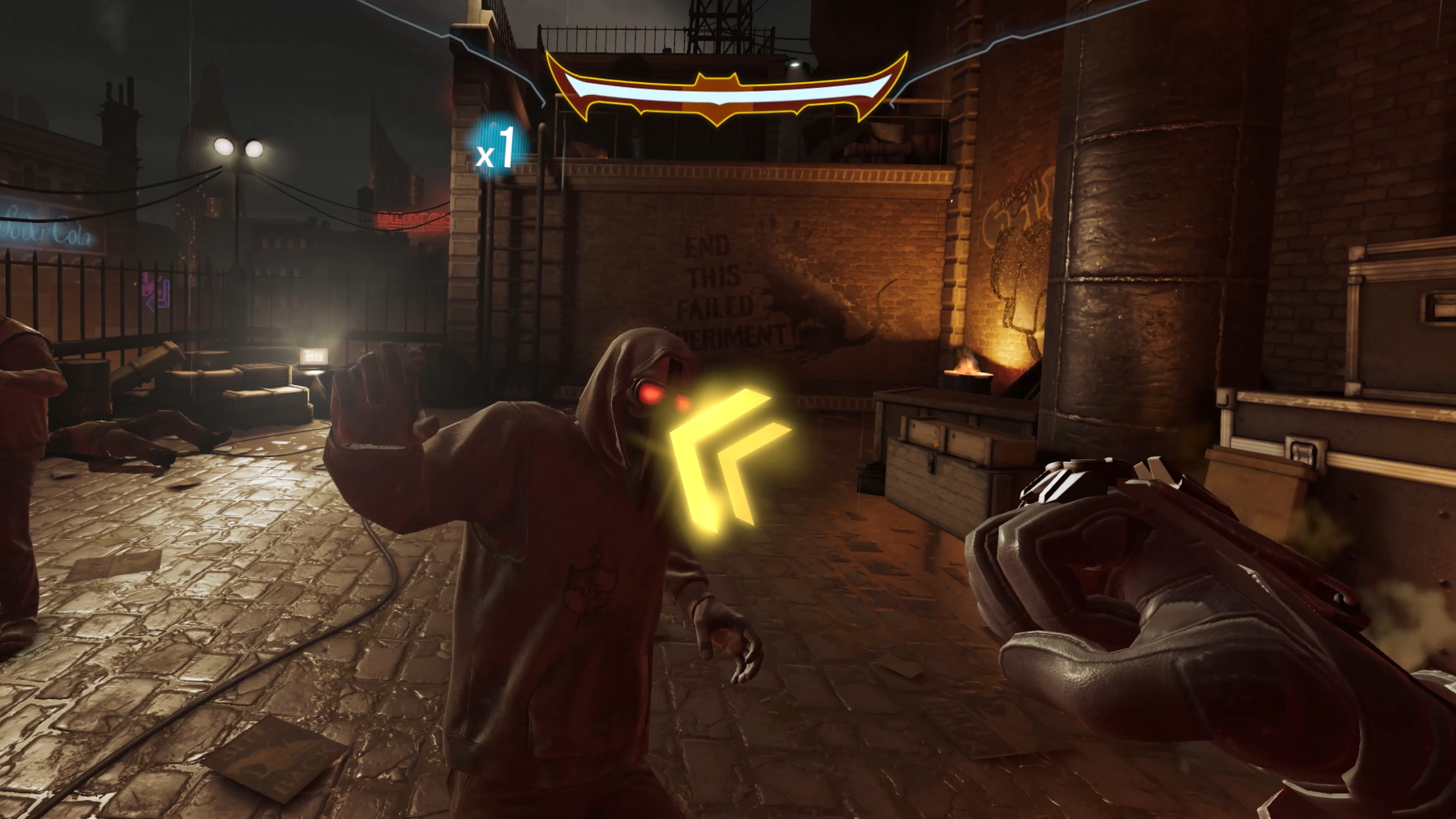
While you'll notice the controller differences and slimmer profile of the headset when unboxing it, nothing prepares you for the color mixed reality vision until you've tried it. It's not as clear as an Apple Vision Pro or even the Meta Quest 3 because of the lenses, but it's beyond just a generational upgrade from the Quest 2. If anything, it's like going from a 1950s black-and-white TV to a color HDTV.
The Meta Quest 3S uses the same 4MP dual front-facing cameras as the Quest 3 and tends to look even brighter thanks to the lenses. Yes, Fresnel lenses aren't as crisp as the pancake lenses on Quest 3, but they allow more light in from the display giving it a distinctly brighter look.
Because the lenses aren't as sharp and the display's resolution is lower, it's a bit harder to read text on a phone while wearing the headset, but this isn't a common mixed reality use case, anyway.
Instead, you'll marvel at how fun games like Starship Home are. Mixed reality games allow you to turn your living room into a spaceship, defend against hordes of zombies in Drop Dead: The Cabin, or play a D&D-like board game together with other headset-wearing friends on your dining room table.
When you're not viewing an augmented version of your real room, you'll be diving dungeons deep in Dungeons of Eternity, fighting bad guys in Batman Arkham Shadow, or just socializing on a Friday evening in Gorilla Tag or Orion Drift.
There are thousands of games on the Meta Quest platform, and that number is growing every single month thanks to a new, more open marketplace and more VR players than ever. Of course, we maintain a list of the best Meta Quest games to give you a good starting point, and there are plenty of great ones to consider like Skydance's Behemoth, Alien Rogue Incursion, Metro Awakening, and many more.
All in all, Quest 3 games look a lot better than Quest 2 games, especially when they're Quest 3 exclusive.
The Meta Quest 3S doesn't include a depth sensor like the Quest 3 has, but that doesn't seem to affect its mixed reality performance in my testing. As you can see in the video above, the Quest 3S is a little slower at mapping than the Quest 3 but not inordinately so.
It took the Quest 3S roughly nine seconds longer to map my living room, but some of that time was because I ran into an early bug where hand tracking in some UI elements felt laggy. Realistically, it probably only took the Quest 3S around seven seconds longer to do the actual mapping, which is impressive given that it just uses cameras to do the work.
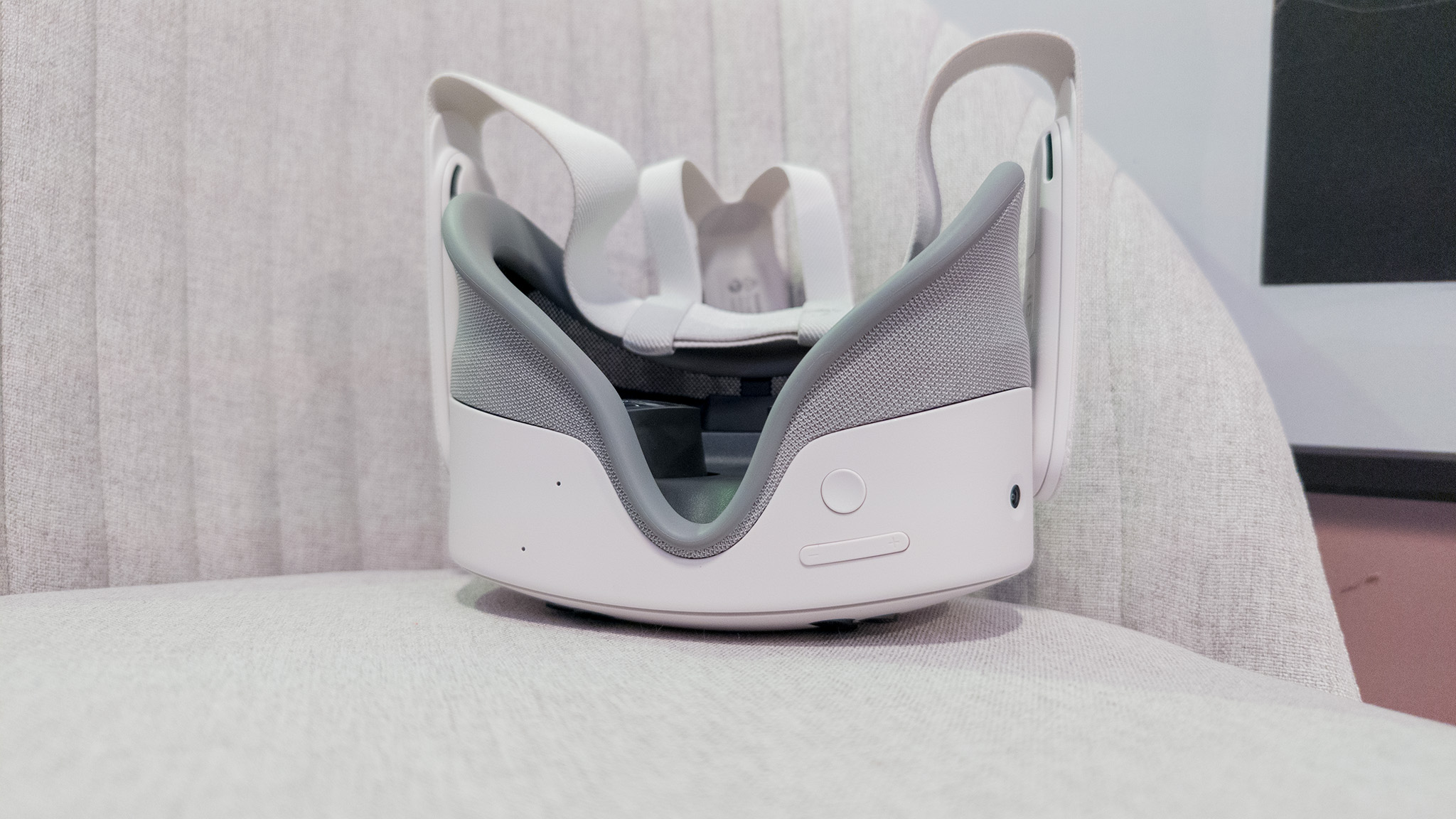
Meta's Horizon OS has been notably upgraded in its mixed reality capabilities since the launch of the Quest 3 last year, including automatic room mapping and object identification that makes mixed reality effortless.
Additionally, a new mixed reality button on the bottom of the Quest 3S makes it effortless to jump between virtual reality and mixed reality. It's a substantial upgrade from all prior Meta Quest headsets which required you to perform an awkward and extremely unreliable double-tap on the side of the headset.
Meta Quest 3S: Competition
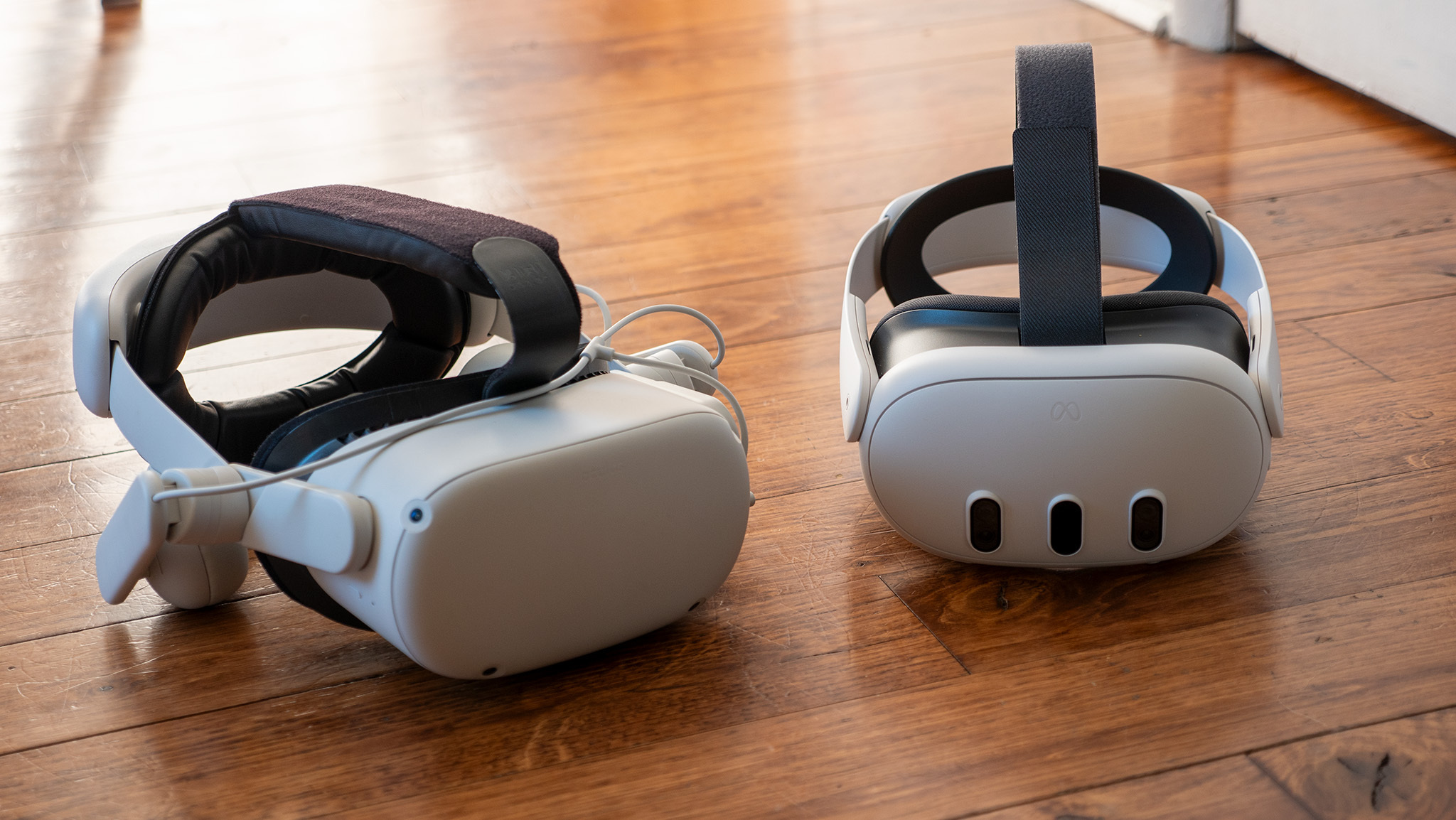
Because the VR gaming industry is relatively small compared to traditional consoles, the Meta Quest 3S's closest competition is made up of Meta headsets. The Quest 3S replaces the Quest 2 as the new standard in affordable VR. Its processor is 100% more powerful than the Quest 2, enabling it to play far richer and more detailed games and render impressive color mixed reality in your room.
It's an easy recommendation to upgrade from a Quest 2 because of the price, but the full next-generation upgrade can be found in the Meta Quest 3. Compared to the Quest 3S, the Meta Quest 3 sports next-generation lenses with a 20-degree wider field of view (FoV), significantly enhanced clarity, a higher resolution display, and better contrast and colors than the Quest 3S. Surprisingly, Quest 3 doesn't include IR illuminators, so it can't play in the dark like Quest 3S.
If you're a PCVR-only player, it would also make more sense to get a Quest 3 because of the enhanced clarity brought about by the lenses and display. Otherwise, if you prefer a headset with an OLED display or a much smaller headset, Bigscreen Beyond is your best bet.
Meta Quest 3S: Should you buy it?

You should buy if...
- You want the best of virtual reality and mixed reality but don't want to spend $500 on a Quest 3.
- You want to play Quest 3-exclusive games and apps.
- You're new to VR and don't want to invest a lot in case you don't like it.
You shouldn't buy if...
- You plan to work in VR. The lenses and display make it difficult to read fine text in this setting.
- You don't like Fresnel lenses.
The Meta Quest 3S is a triumph in every regard. It's an unbelievable bargain at $299, yet it still exhibits the best mixed reality and virtual reality gaming available today. The only real compromises are the lenses and display, which are worse than the Quest 3 but not detrimentally so. If I had to compare the experience to more traditional gaming specs, I'd say it's similar to the difference between a 1080p and 4K setup.
Otherwise, the Meta Quest 3S is everything you need in a VR and mixed-reality headset today. It not only offers the highest-quality standalone VR games available—including the incredible free pack-in Batman Arkham Shadow—but it also connects to any PC and can play PCVR games completely wirelessly. It's a win-win-win for anyone looking to get into VR or upgrade from an older headset.
There are certainly reasons to choose a Quest 3 over a Quest 3S, but for most people, the price point and overall value of the Quest 3S make it a must-buy console this Holiday season.
A new reality
Get next-generation virtual reality and mixed reality games and apps with the Meta Quest 3S, a surprisingly affordable headset with capabilities beyond your imagination.







